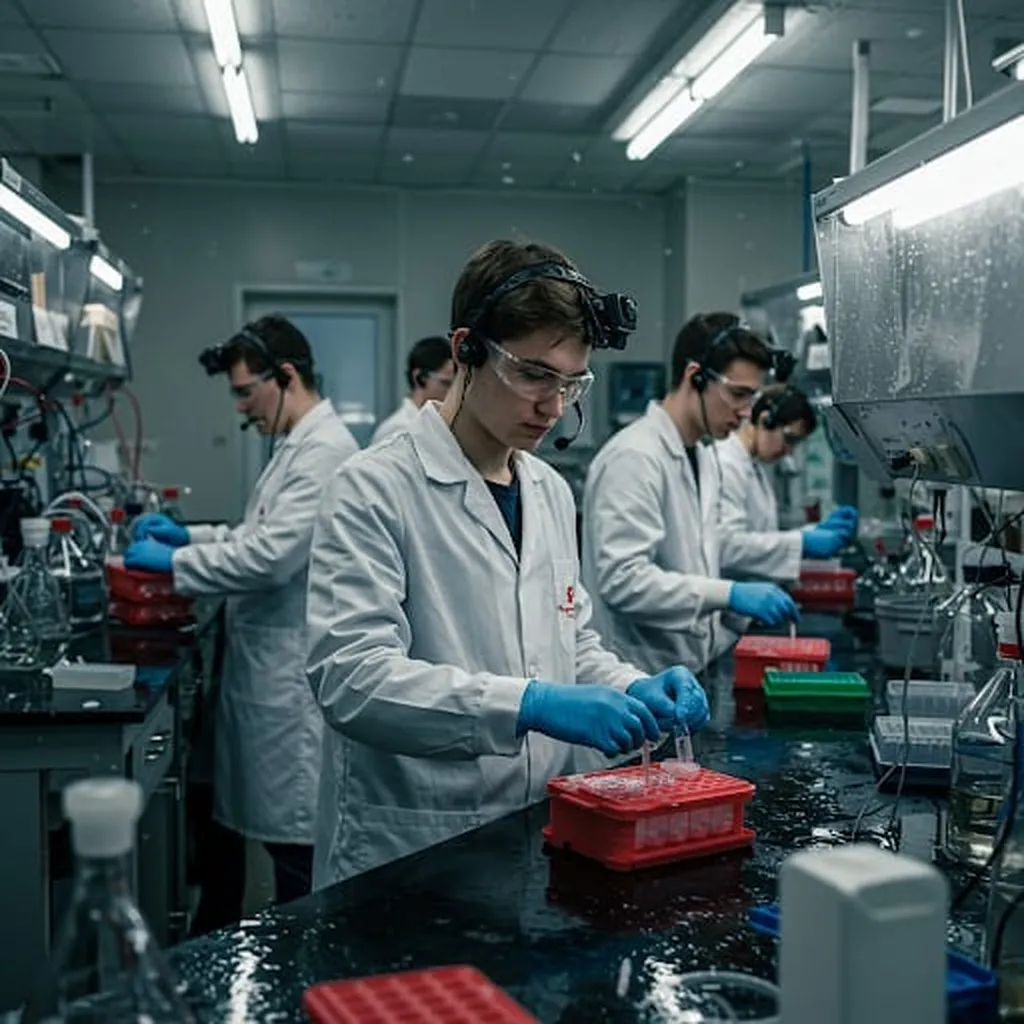In the race to feed a growing global population, scientists are turning to an unlikely ally: microorganisms. A recent study led by Sergey A. Bursakov from the All-Russia Research Institute of Agricultural Biotechnology (ARRIAB) in Moscow explores how beneficial microbes could revolutionize speed breeding, a technique that accelerates the development of new plant varieties. Published in the journal ‘Plants’ (which translates to ‘Rasteniya’ in Russian), this research opens up new avenues for precision agriculture and could have significant commercial impacts, particularly in the energy sector.
Speed breeding, a technique that allows multiple generations of plants to be grown in rapid succession, has already made waves in the agricultural world. By reducing the time it takes to develop new crop varieties, breeders can more quickly respond to changing environmental conditions and market demands. However, the integration of beneficial microorganisms into this process could take speed breeding to the next level.
“Microorganisms can stimulate growth and development, promote overall fitness and rapid maturation, prevent disease, and impart stress resistance in speed breeding plants,” explains Bursakov. This symbiotic relationship between plants and microbes, known as the phytobiome, has long been recognized, but its application in speed breeding is a novel concept.
The study highlights the potential of both epiphytic (surface-dwelling) and endophytic (internal) microorganisms. These microbes can enhance plant growth, improve nutrient uptake, and increase resistance to pests and diseases. By carefully selecting and applying these microorganisms under controlled speed breeding conditions, researchers aim to create programmable results, optimizing plant development for specific traits.
One of the most promising areas of this research is the use of mycorrhiza, a type of symbiotic relationship between fungi and plant roots. Mycorrhizal fungi can enhance nutrient uptake, particularly phosphorus, which is crucial for plant growth and development. This could lead to more efficient use of fertilizers, reducing costs and environmental impact.
The commercial implications of this research are vast. In the energy sector, for instance, the development of fast-growing, high-yield crops can lead to more sustainable and efficient production of biofuels. By integrating beneficial microorganisms into speed breeding programs, companies can accelerate the development of energy crops, such as switchgrass and miscanthus, which are used to produce bioethanol and other biofuels.
Moreover, the use of beneficial microorganisms can reduce the need for chemical pesticides and fertilizers, making biofuel production more environmentally friendly and cost-effective. This aligns with the growing demand for sustainable and renewable energy sources, driven by global efforts to reduce carbon emissions and combat climate change.
While the research is still in its early stages, the potential is undeniable. As Bursakov notes, “The controlled practical use of microorganisms under speed breeding conditions should contribute to producing programmable results.” This could pave the way for a new era of precision agriculture, where the use of beneficial microorganisms is an indispensable part of the breeding process.
The study published in ‘Plants’ (Rasteniya) is a significant step forward in this field, drawing attention to the practical and effective utilization of microorganisms in speed breeding. As the global population continues to grow, and the demand for food, feed, and biofuels increases, this research offers a promising pathway to meet these challenges. By harnessing the power of microorganisms, we can accelerate the development of new plant varieties, enhance agricultural productivity, and contribute to a more sustainable future.

